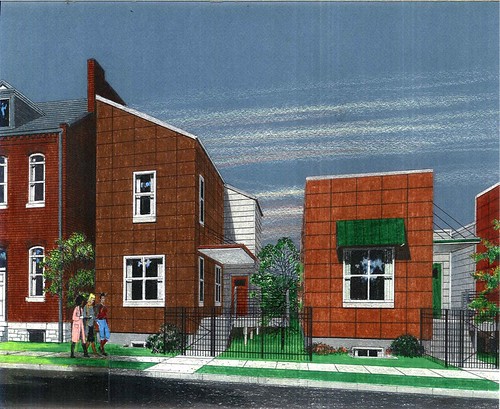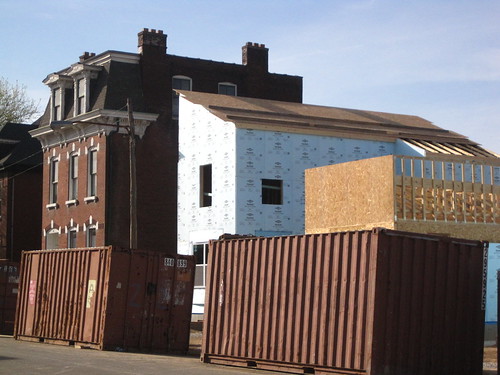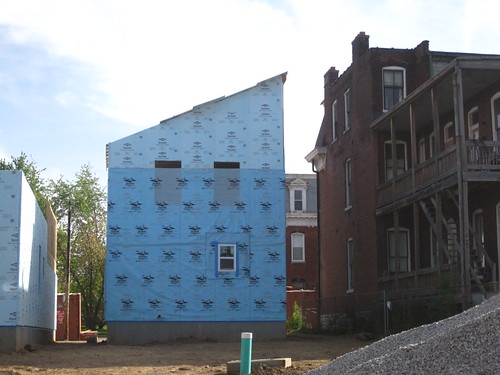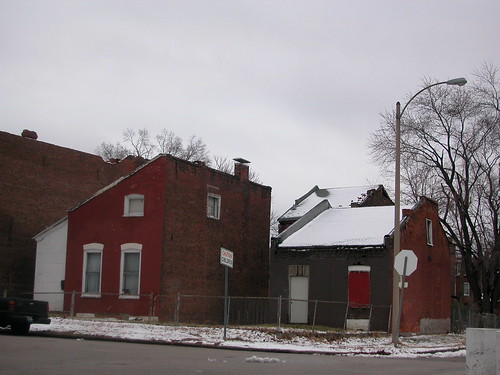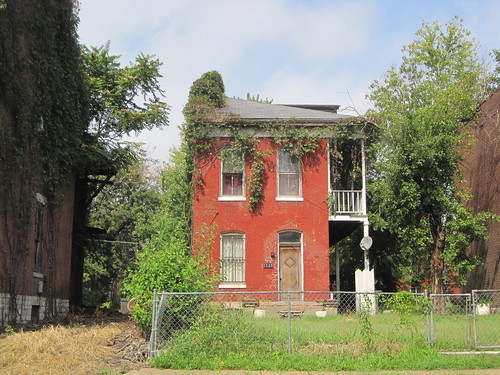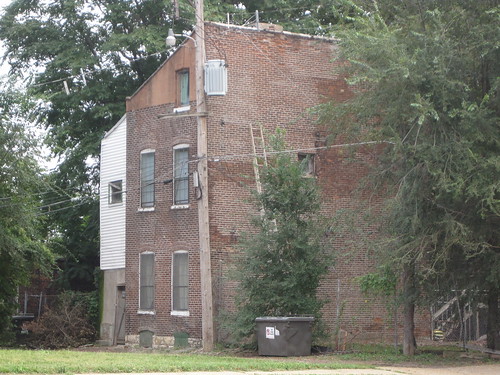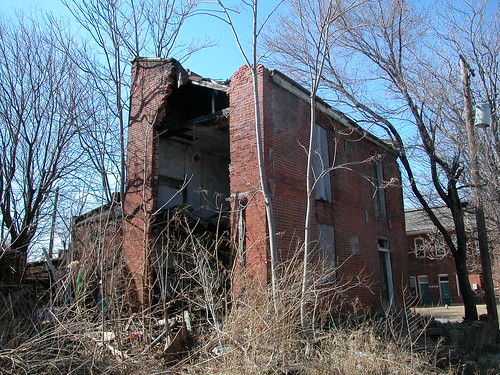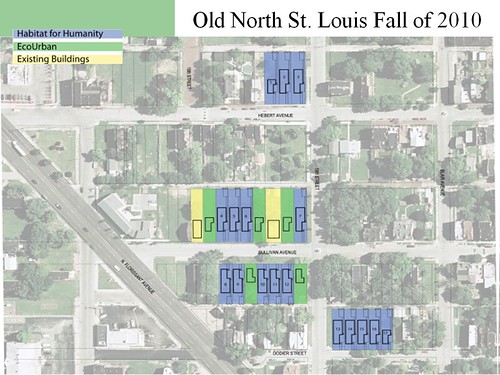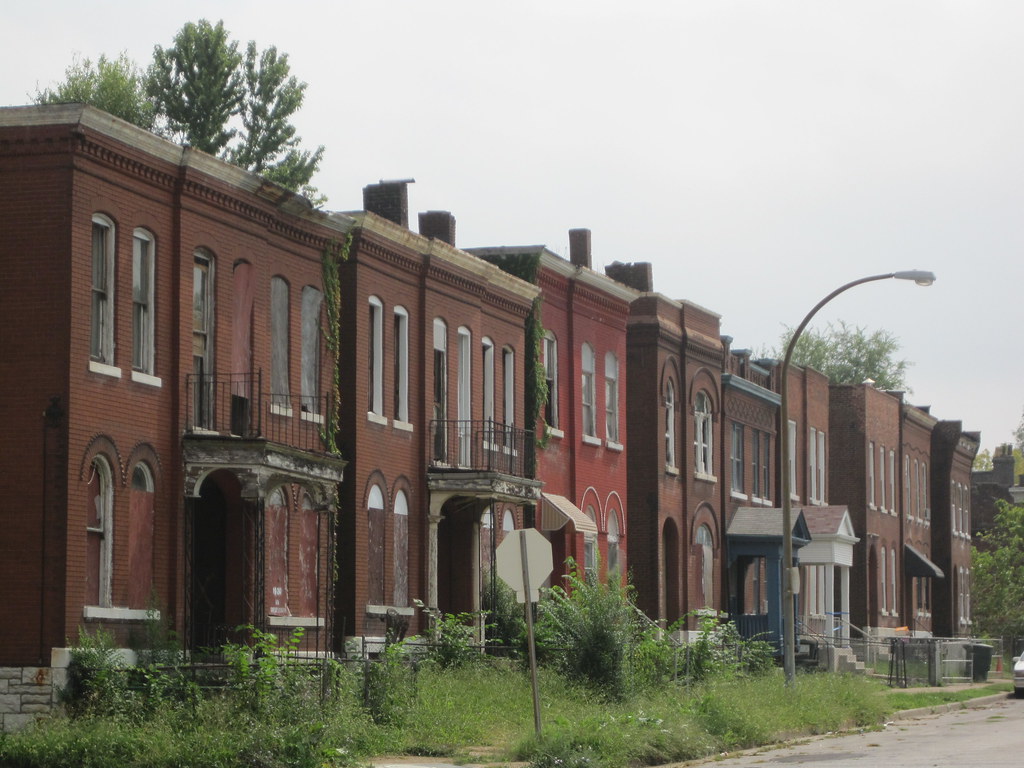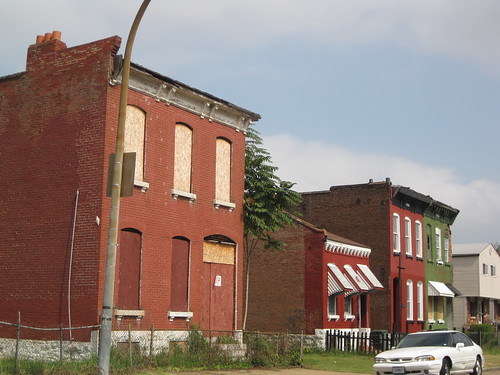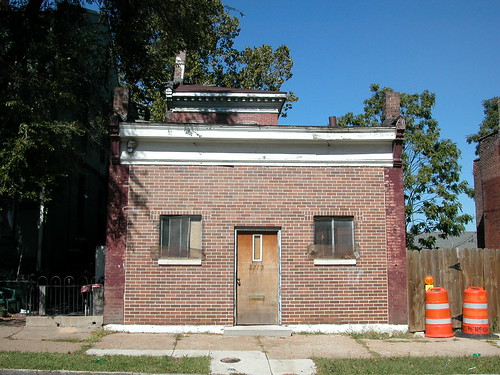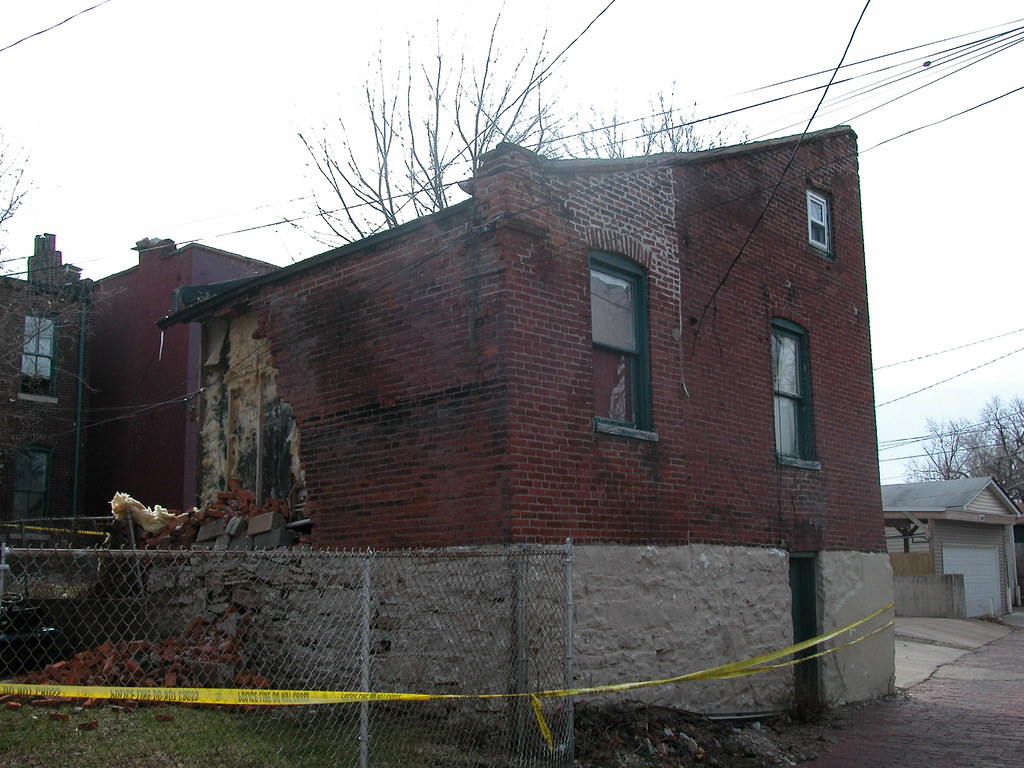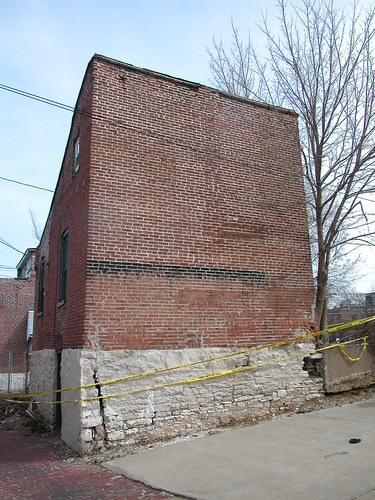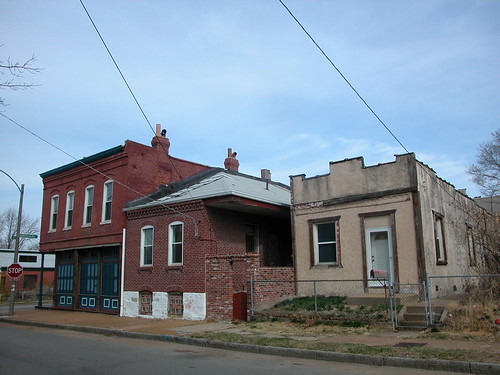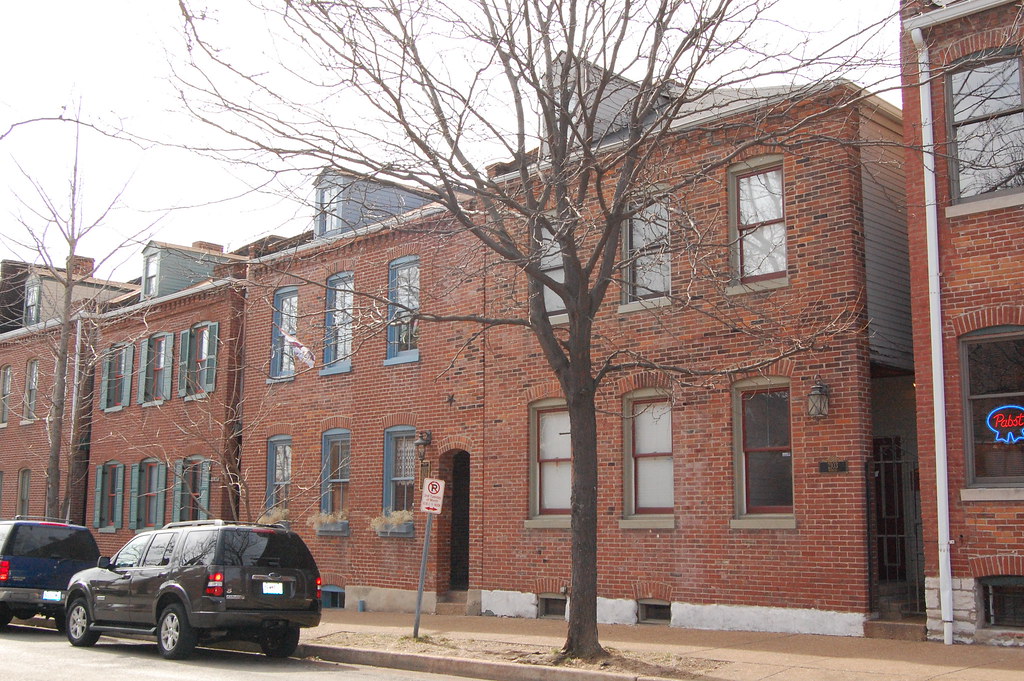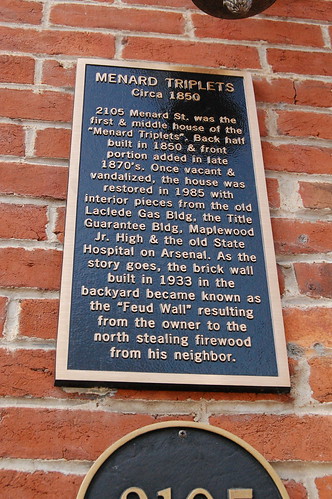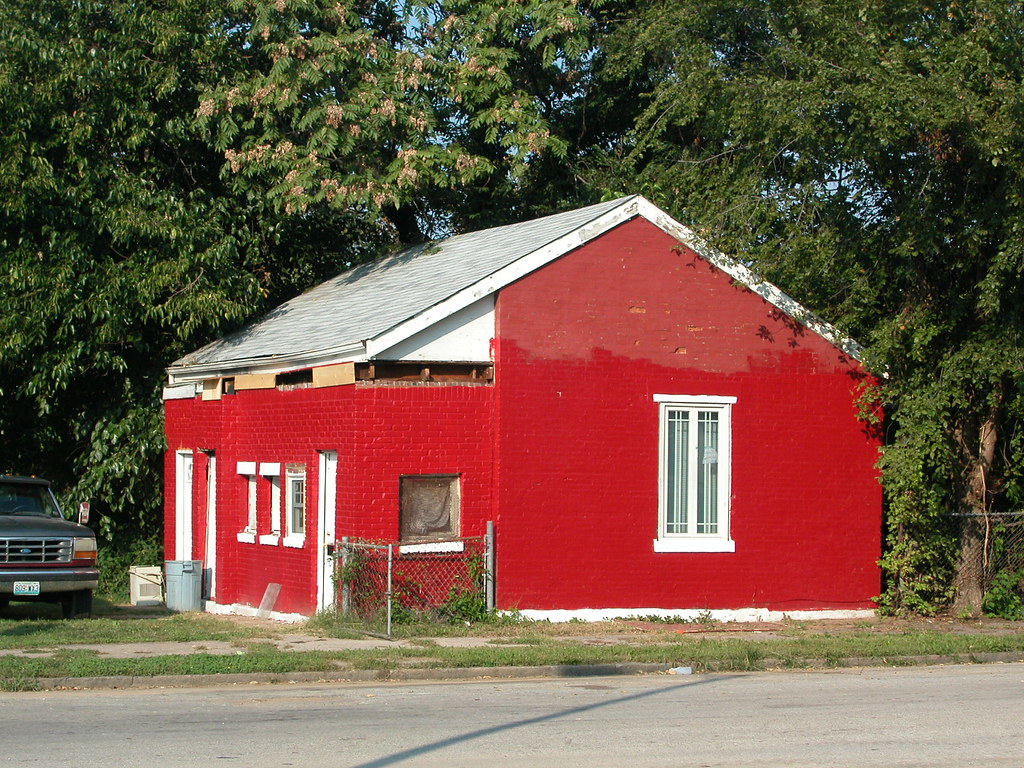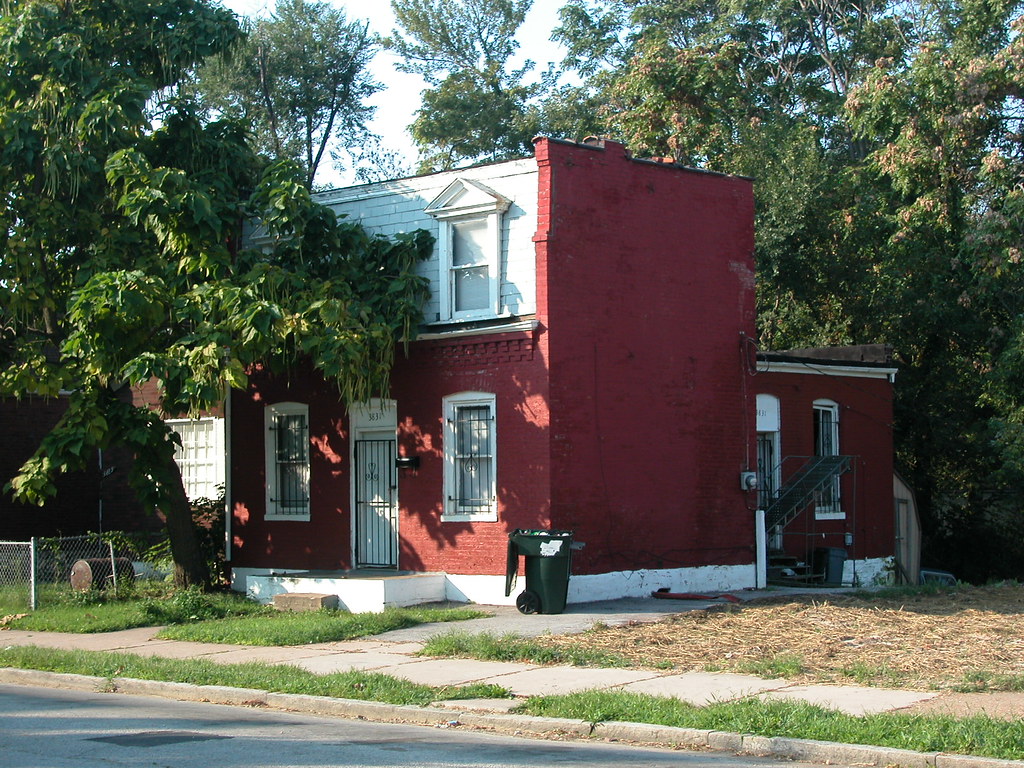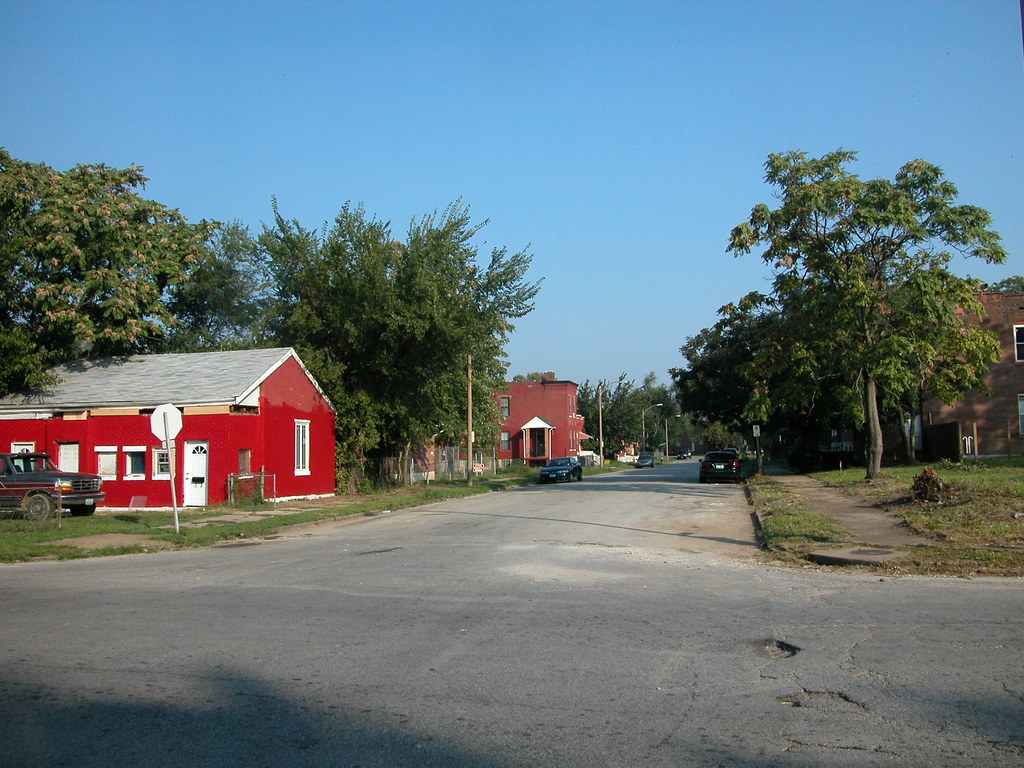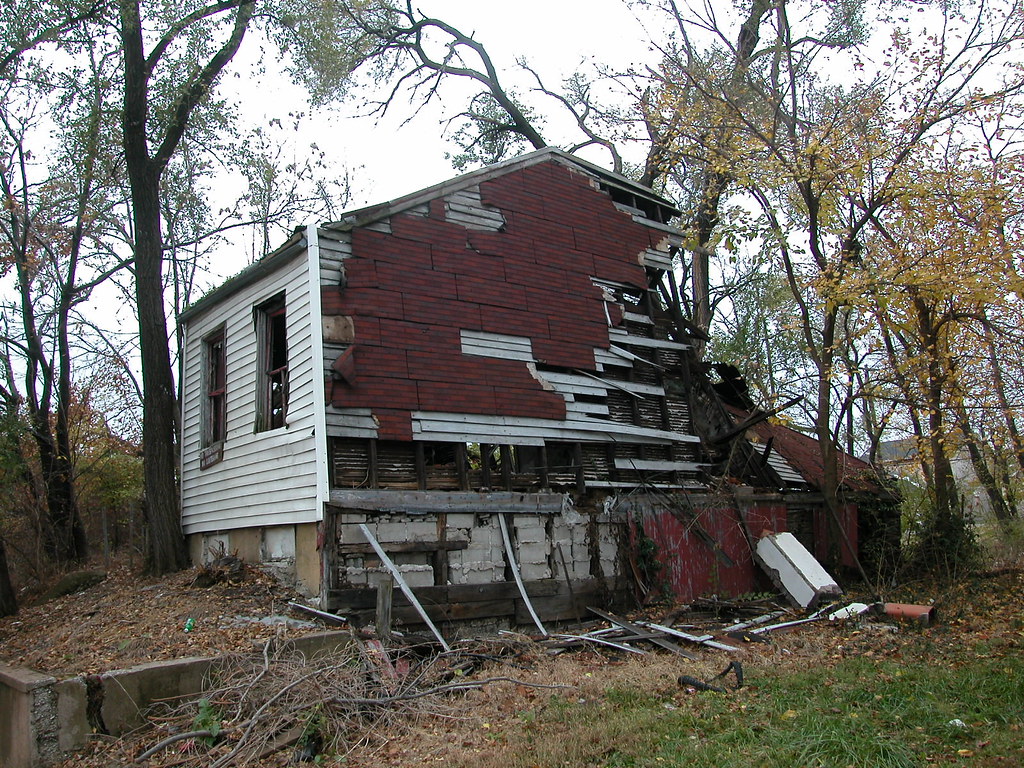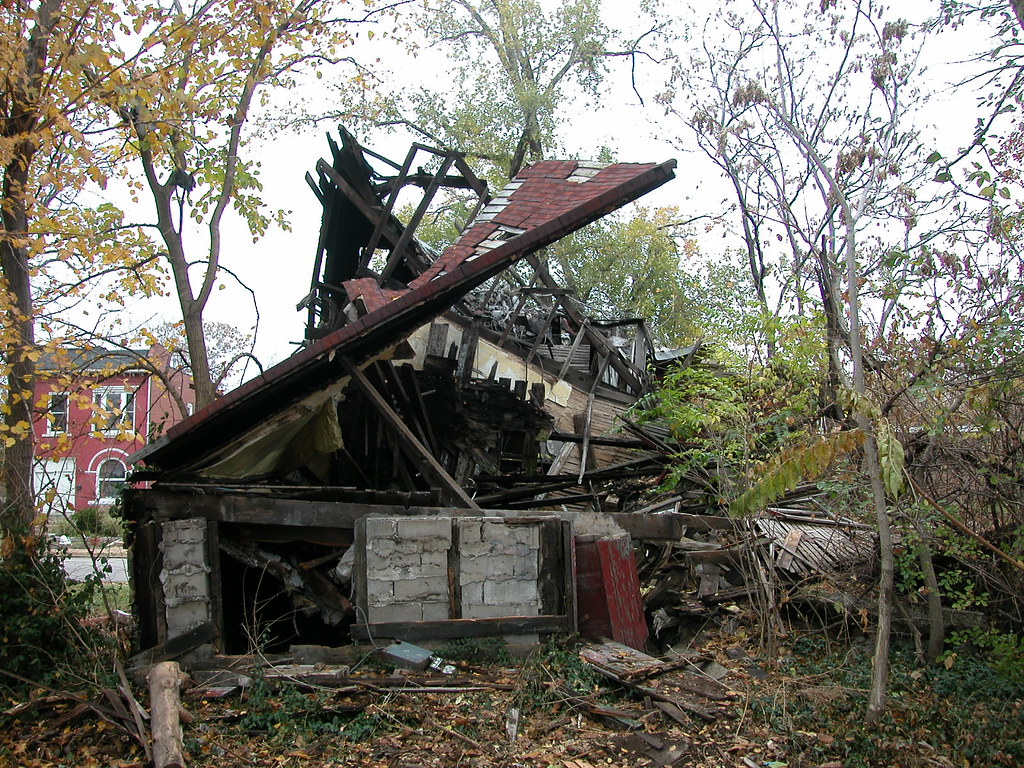by Michael R. Allen
 By March 2009, things were not good for the unusual two-and-half-story flounder house located at 2543 Maiden Lane in St. Louis Place. The house was sporting a small hole at the base of its west wall as well as a major stress crack. The hole was strange because there was no apparent structural problem causing it. Urban Solutions, the consulting firm performing maintenance on behalf of owner McEagle Properties, placed one of its orange construction fences around the building in response to the conditions. Then the building just sat, with most window and door openings unsecured.
By March 2009, things were not good for the unusual two-and-half-story flounder house located at 2543 Maiden Lane in St. Louis Place. The house was sporting a small hole at the base of its west wall as well as a major stress crack. The hole was strange because there was no apparent structural problem causing it. Urban Solutions, the consulting firm performing maintenance on behalf of owner McEagle Properties, placed one of its orange construction fences around the building in response to the conditions. Then the building just sat, with most window and door openings unsecured.
On April 2, the Building Division condemned the house for demolition, but so far has not placed the demolition out to bid.
The house stands out not only for a height rare for a flounder house, but also because it actually faced out toward Maiden Lane, an east-west street that is almost alley-like. The flounder sits on the north end of its lot, directly on the alley between Maiden Lane and North Market. The one-story flounder addition in front is a unique feature as well. The east side contains a gallery porch with access to the two flats inside of the building.
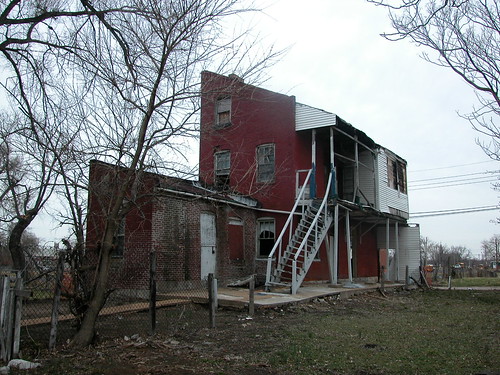
The north face shows the full height of the house, as well as some original six-over-six wooden window sash.

Last week, I noticed that the hole had grown bigger, with a pile of bricks at the base covered in lime mortar dust. I wondered if recent windy days had taken their toll until today, when I realized that a more common culprit is at work here.

That’s right, the brick thieves are back in action. They have made short work of the one story addition, and have made the hole in the main house bigger (although their clumsy methods have broken many bricks).
 The tire tracks running through the high grass on the vacant lot next door provide clear evidence of thievery.
The tire tracks running through the high grass on the vacant lot next door provide clear evidence of thievery.
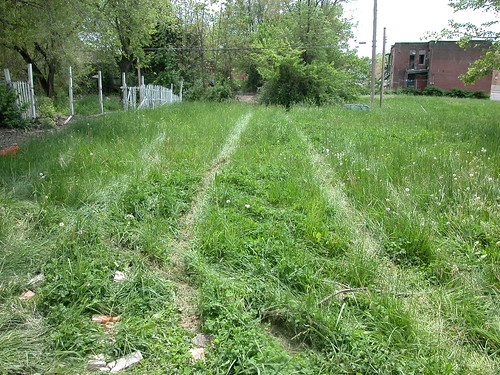
Strange that the thieves have evaded detection here — the west wall faces out at busy Jefferson Avenue, not far from the police station. I’m also perplexed by the fact that of all of the brick buildings with wall damage in this vicinity, the thieves have struck this one. Is the recent condemnation for demolition a prompt? Perhaps the thieves saw the building on a demolition bid list.
In the middle of a flagging economy, brick theft could be elevated this summer. It’s time for all of us to get tough — city government, police and neighbors. If you see people removing bricks from a building and there is any suspicion of theft, call 911. If you have the constitution, take photographs of the activity and wait for police to arrive. Unfortunately, police will not always respond seriously to a brick theft call. A legitimate wrecker with demolition rights will be able to show police a demolition permit.
Let’s hope this summer does not see a wave of destruction like the ones that hit the north side in the past two years.


